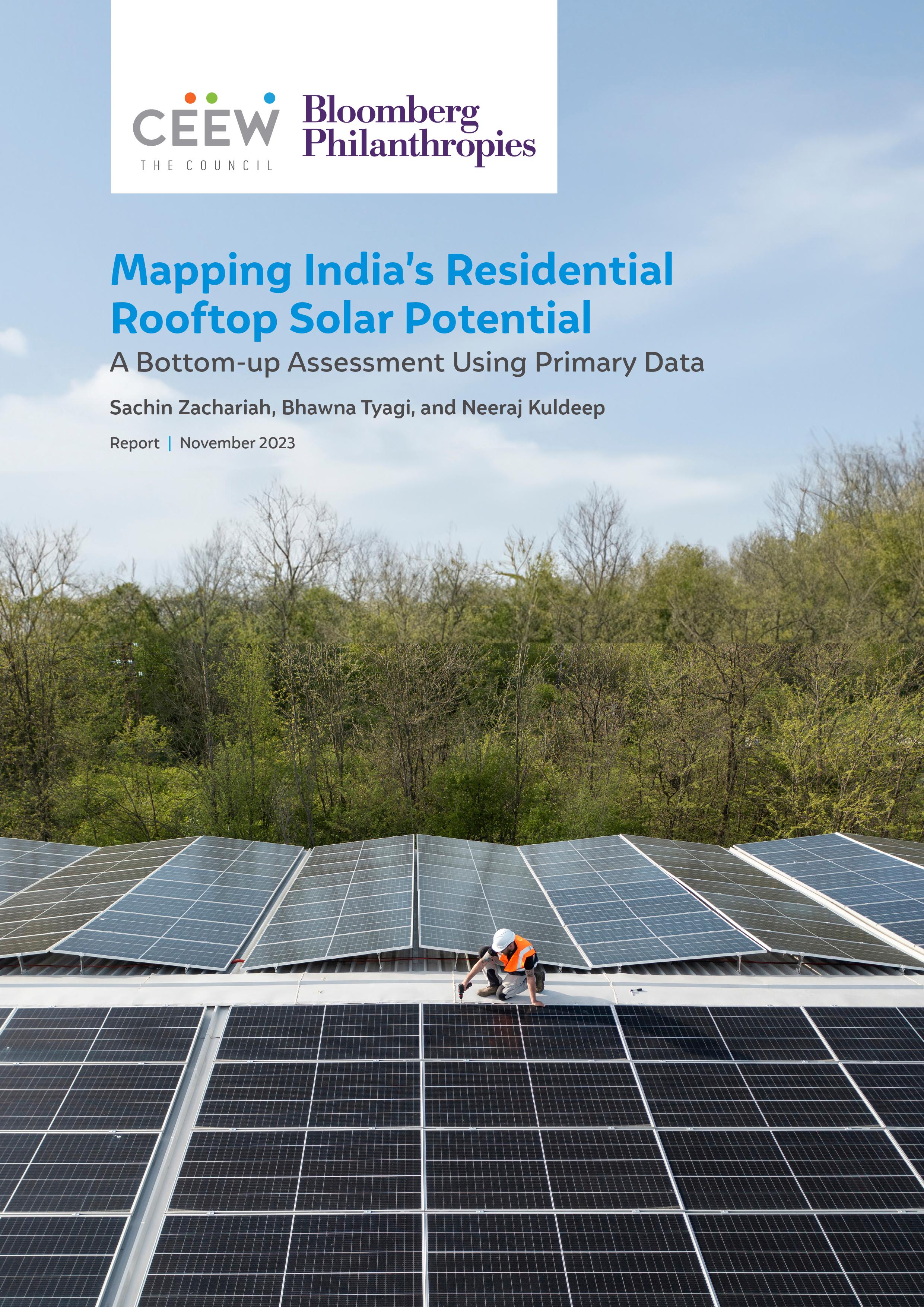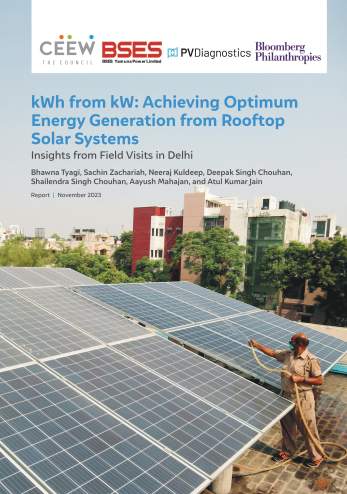



Sachin Zachariah, Bhawna Tyagi and Neeraj Kuldeep
November 2023 | Energy Transitions
Suggested citation: Zachariah, Sachin, Bhawna Tyagi, and Neeraj Kuldeep. 2023. Mapping India’s residential rooftop solar potential A bottom up assessment using primary data. New Delhi: Council on Energy, Environment and Water.
CEEW conducted a detailed assessment of the technical, economic, and market potential of deploying rooftop solar (RTS) in Indian households by adopting the bottom-up approach. i.e. starting at the household level. The study utilises the primary data collected in India Residential Energy Survey (IRES) of 14,850 households spanning across 21 states and 152 districts in 2020. The assessment further provides insights into the RTS potential of different states, the urban-rural split, and the potential for different system sizes.
Rooftop solar provides an opportunity for households to contribute significantly to the ongoing energy transition by substituting their electricity consumption with solar. The true economic and market potential can be captured only by considering households’ economic strength and energy footprint.
National-level estimations:

Source: Authors' analysis
State-level estimations:
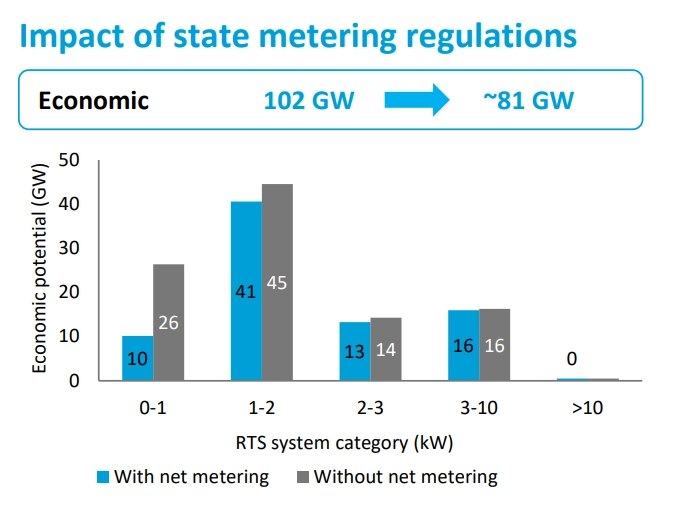
According to Bridge to India’s Solar Rooftop Map (June 2023), the residential rooftop solar installed capacity in India is 2.7 GW.
India has set a target of 40 GW of rooftop solar by 2022, out of which ~11 GW has been achieved as of 31.10.2023.
Rooftop solar can help consumers save on their electricity bill with the use of available roof space. It also provides residential consumers access to reliable and clean electricity and an opportunity to contribute significantly to India’s energy transition. Rooftop solar also reduces T&D losses as the points of electricity generation and consumption are colocated.
What is the payback period for rooftop solar in India? The MNRE-notified benchmark cost of a rooftop solar system of size 1 - 2 kW is INR 43,140 per kW (excluding GST), applicable for general category states/ UTs. The payback period for rooftop solar in India will vary based on the system size, electricity generation and consumption, subsidy availed and so on. The study considers a payback period of less than 5 years to estimate the market potential.
MNRE has a grid-connected rooftop solar program. The program currently in its second phase which has been extended till 31.03.2026.
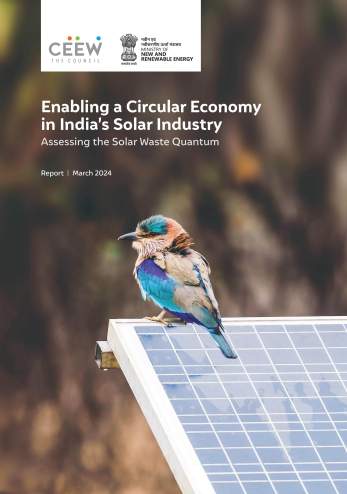
Enabling a Circular Economy in India’s Solar Industry
Akanksha Tyagi, Ajinkya Kale, Neeraj Kuldeep
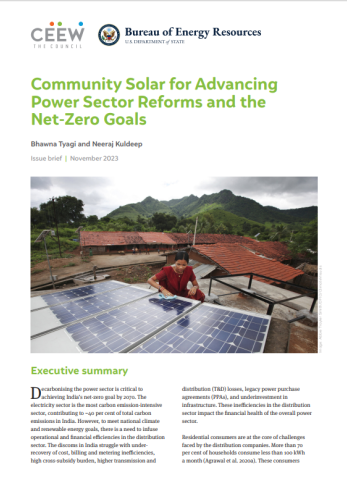
Community Solar for Advancing Power Sector Reforms and the Net-Zero Goals
Bhawna Tyagi , Neeraj Kuldeep
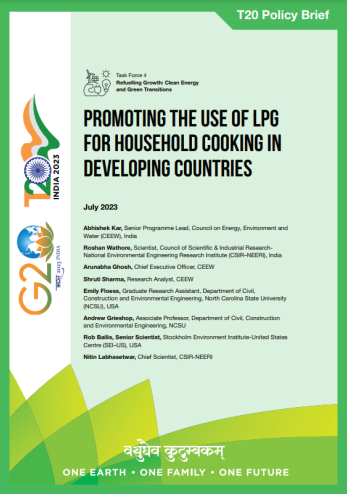
Promoting the Use of LPG for Household Cooking in Developing Countries
Abhishek Kar, Roshan Wathore, Arunabha Ghosh, Shruti Sharma, Emily Floess, Andrew Grieshop, Rob Bailis, and Nitin Labhasetwar
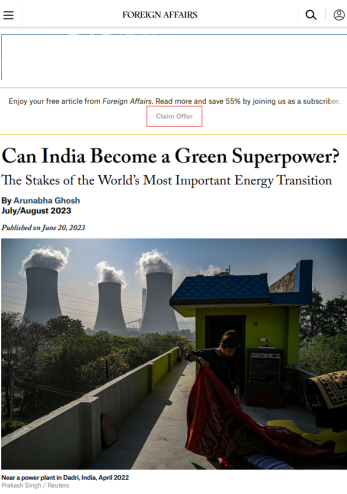
Can India Become a Green Superpower?The Stakes of the World’s Most Important Energy Transition
Arunabha Ghosh
